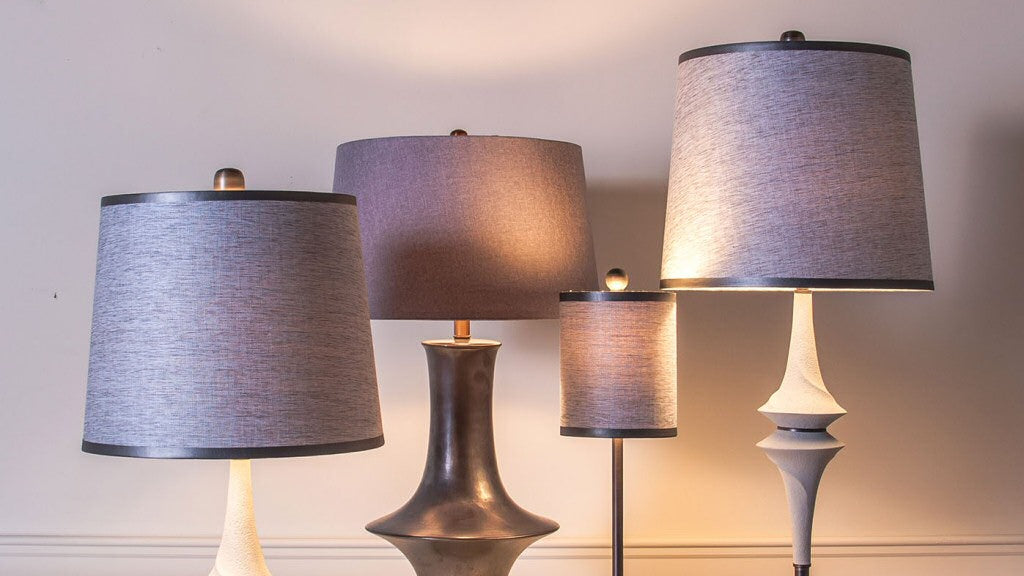
Lamp Shades: The Ultimate Buyer's Guide
Search
Learn all about Lamp Shades
We've put together a collection of in-depth guides about lamp shades. Click on the links below to learn about the the various aspects of lamp shades. Alternatively, you can continue reading this article for highlights.
Using lamp shades with light fixtures
How to attach a lamp shade to a lamp
How to measure lamp shades for a perfect fit
Matching a lamp shade to your lamp base
Lamp shade materials colors textures and patterns
Light bulb heat and lamp electrical safety tips
How to clean and repair lamp shades
How to create a custom DIY lamp shade
Finials and accessories for lamp shades
The ultimate glossary of lamp shade terms
Read on for an overview of lamp shade topics.

The Purpose of Lamp Shades
What is a lamp shade?
Lamp shades form a shield around a light bulb to protect your eyes from glaring light. The lamp shade diffuses and reflects the light so that when you look toward the lamp you are not dazzled by a concentration of bright light.
Lamp shades also help to direct and aim the light so that it is focused where it can be practically used. They provide a decorative element as part of your room's decor, and are available in a wide range of sizes, styles and colors.
Why we use lamp shades
The basic purpose of a lampshade is to balance light diffusion and direction. Light escapes through the top and bottom openings of the shade, while the material of the shade itself filters the light to varying degrees, depending on its opacity and thickness.
Materials like fabric, glass, or metal can either absorb or reflect light, contributing to the shade's ability to direct or soften the light. For example, lined shades or hardback shades tend to reflect more light out of the top and bottom, whereas more translucent materials allow diffused light to pass through the sides.
Managing heat from light bulbs
Heat management is critical function of lampshades. Light bulbs, especially incandescent types, emit heat as well as light. The dual openings at the top and bottom of a lampshade allow this heat to vent away from the bulb, helping to prevent overheating and ensuring safety.
For this reason, a lampshade should never be completely covered, as this could trap heat and pose a fire risk. Modern, more energy-efficient bulbs like LEDs and CFLs produce less heat, but they still require some airflow.
Diffusing glare from light bulbs
The shape of a lampshade also affects how light is distributed in a room. Cylinder or drum shades produce an even spread of light above and below, making them ideal for ambient lighting.
Shades with a wider bottom and narrower top, such as empire or bell shades, spread more light downward, focusing it on specific areas. The coolie shade, with its very wide bottom and narrow top, directs most of the light downwards, providing a wide spread of softer, ambient light.
Different shapes serve various functional needs, from reading light beside a sofa to decorative, ambient lighting in the background of a room.
The color of the lamp shade matters

Color and lining influence the shade’s aesthetic and lighting qualities. For instance, a red or dark-colored shade will tint the light and reduce brightness due to light absorption, while neutral tones like white or beige reflect a more natural light color.
Shades with a reflective or white lining help to keep the light color true while allowing more creative freedom in exterior design. Dark-colored shades, especially, benefit from reflective linings to balance light output with aesthetic style.
The shape of the lamp shade directs the light
The shape of a lampshade impacts how light is distributed. Light from a bulb typically radiates in multiple directions, and its interaction with the lampshade, absorption, reflection, and transmission, depends on the shade’s shape and material.
- Cylinder or Drum Shades: These shades, with vertical sides, emit light evenly from the top and bottom, creating a wide, cone-shaped light beam.
- Square or rectangular shades: These shades create pyramid-shaped beams, typically with vertical sides and equal diameters at the top and bottom.
- Empire and Floor Shades: These shades have sloped sides, directing light more narrowly upwards, creating a smaller, focused beam on the ceiling while dispersing a wider beam downward. This spread may reduce brightness as the light is less concentrated.
- Coolie Shades: These shades, with a wide bottom and narrow top, direct most light downward, producing a soft, ambient glow over a broader area, though light appears dimmer as it diffuses.
Shades can focus or disperse light, much like a flashlight, with narrower openings providing more intense light. For brighter lighting, either a stronger bulb or a smaller, more focused shade is recommended, keeping within the lamp’s wattage limit.
A brief history of lamp shades
Historically, lamp shades date back to ancient civilizations, initially crafted from natural materials like animal hides and reeds to soften the harsh glow of oil lamps or candles.
The 17th and 18th centuries saw the rise of glass shades in Europe, where they became decorative as well as functional.
The late 19th and early 20th centuries introduced electric lighting, sparking a boom in design diversity. Iconic designs like Tiffany stained-glass lampshades, inspired by nature and handcrafted from colored glass, became popular.
Through the 20th century, movements like Art Deco and mid-century modern shaped lampshade styles, while new materials like plastic and vinyl made them more accessible and affordable.
Today, lampshades continue to serve both practical and decorative purposes, available in various shapes, colors, and materials to suit different aesthetic and functional needs.
Learn more
For a more in-depth look about the purpose of lamp shades, see our expert guide:
The main types and shapes of lamp shades
Email us at sales@lampsusa.com if you have any questions.
A Wide Variety of Lamp Shades
Lamp shades come in many shapes and styles. Some of the most common shapes when viewed from above include circles, ovals, rectangles, squares, and octagons. From the side, shades may appear as drum, empire, or bell shapes, among others. Some shades even have unique features like a gallery area or "cut" corners.
Main Types of Lamp Shades
Round Lamp Shades

The most common shade shape is round. Viewed from the top, it appears as a circle, and the openings are usually circular. It gives a uniform look from any angle and is compatible with various lamp bases.
Oval Lamp Shades

Oval shades are similar to round shades but have an oval shape when seen from above, making them ideal for narrower spaces. This shape is also a popular design choice to add style.
Square and Rectangular Lamp Shades

Square shades have a more geometric, modern look with flat sides and right-angled corners. Rectangular shades share a similar shape but are longer on one side, adding a stylish appeal while conserving space.
Octagon or Cut-Corner Lamp Shades

Octagon shades have eight sides, often created by cutting the corners of a square shade. This "cut-corner" detail softens the look, providing a unique aesthetic.
Variations of Lampshade Shapes
Drum and Cylinder Lamp Shades

A drum shade has vertical sides, with equal-sized top and bottom openings. If the shade is taller than it is wide, it's called a cylinder shade. Drum and cylinder shades provide a modern look, with balanced light dispersion.
Empire Lamp Shades

An empire shade has a top opening smaller than the bottom, creating a cone shape. The sloping sides direct more light downward, making it ideal for table lamps and relaxed settings.
Coolie Lamp Shades

Coolie shades have a small top opening and a wide bottom opening, creating a flattened cone shape. This allows light to spread widely, giving a diffuse, soft glow.
Bell Lamp Shades

Bell shades have gently curving sides, resembling a bell. This elegant shape is suitable for traditional lamp bases and offers a classic look.
Unique Lamp Shade Modifications
Gallery Lamp Shades

A gallery shade has a decorative band or strip along the edge, adding structure and detail. Scalloped shades feature curved edges, giving a flowing, ornamental appearance.
Scalloped Lamp Shades

A scalloped shade has scoop shapes along one or both edges, giving the shade an elegant relaxed look.
Pleated Lamp Shades

Pleated shades use folded fabric for a textured, three-dimensional look. This adds sophistication and varies in width and style, fitting both modern and classic décor.
Lamp Shade Trim and Accessories

Lamp shades may have decorative trim around the edges, hiding seams and adding elegance. Tassels, charms, and even small ornaments can further personalize a shade.
A finial on top serves both decorative and functional purposes, holding the shade in place.
Materials for Lamp Shades
Tiffany, Mica, and Glass Shades
Tiffany shades use stained glass pieces in intricate designs, creating colorful, artistic lighting effects. Mica shades feature natural mineral sheets that emit a warm glow, often used in pyramid shapes. Glass shades offer durability and a variety of styles, from clear to frosted, diffusing light beautifully.
Reflector Bowls

A reflector bowl inside the lamp reduces glare and directs light upward, providing ambient lighting. It complements the outer decorative shade by enhancing light diffusion.
Learn more
For a more in-depth guide about the various types of lamp shades, see our expert guide:
Using lamp shades with light fixtures
Lamp shades aren't just for table or floor lamps; they play a versatile role in ceiling and wall mounted light fixtures, adding both style and function. Using lamp shades in fixtures like ceiling lights, wall lights, and chandeliers can help reduce glare and create a softer, more appealing light.
Ceiling Lights

In ceiling lights, drum pendant shades are especially popular for their clean, modern look. Drum pendants hang from the ceiling with a round, shallow shade, typically covering multiple bulbs to provide soft, even lighting.
For added style, some designs use double-layered drum shades, with an inner solid shade and an outer transparent layer. Swag pendant lights are similar, but they’re plug-in fixtures that can be easily moved and adjusted, making them a flexible option.
Chandeliers

Chandeliers are another classic use for lamp shades. Traditional chandeliers often have mini chandelier shades on each arm to diffuse light from individual bulbs, reducing glare.
Classic designs sometimes leave bulbs exposed, but small shades remain a popular choice for a softer, elegant look.
Wall-Mounted Fixtures
For wall-mounted fixtures, swing-arm lamps are common. These lights attach to the wall and have movable arms that allow them to be positioned over desks or seating areas.
Lamp shades in empire or drum styles are usually attached at the end of the arm, providing the flexibility of a floor or table lamp without taking up floor space.
Bathroom Vanity Lights
Bathroom vanity lights also benefit from shades, which help soften the light and reduce harsh shadows.
Vanity light kits often include scoop-shaped shades that cover the light bulbs, making the fixture more comfortable to look at and adding a polished touch to the bathroom.
Flush-Mount Ceiling Lights
Flush-mount ceiling lights, typically close to the ceiling, now often feature drum shades instead of plain glass domes for a more updated appearance.
This style minimizes glare and maintains a sleek look, while a semi-flush variant hangs slightly below the ceiling to allow more decorative shading.
Coordinating Styles
Lamp shades offer flexibility in matching light fixtures with decor themes. For instance, coordinating shades in a room, such as matching a drum pendant with table lamps of the same shade style, creates a cohesive look.
Shades allow homeowners to blend soft materials with hardware, making spaces feel balanced and comfortable.
Learn more
For a more in-depth guide about using lamp shades with light fixtures, see our expert guide:
Using lamp shades with light fixtures
The parts of a lamp shade

Lamp shades are made up of several key parts, each contributing to their look and functionality. They start with a lightweight metal frame, forming the basic shape and providing a way to attach the shade to a lamp or fixture.
The attachment part is called a fitter, and it varies depending on the lamp type. It extends inward as part of the lamp shade frame.
The Frame and Material Covering
Frame Structure
The frame creates the shape and height of the lamp shade, typically with two hoops connected by vertical rods. For decorative shades like bell-shaped shades, the rods curve to match the design.
Covering Material
The frame is covered with one or more layers of material, like fabric, paper, or linen, which wraps around the top and bottom and may have a decorative trim. This covering diffuses the light from the bulb, making it gentler on the eyes.
Additional Frame Features
Tiltable Frames
Some lamp shades have a tiltable frame with a hinge, allowing light to be directed to specific areas. This feature, however, may cause heat to accumulate and discolor the shade.
Collapsible Frames
Collapsible frames allow shades to fold flat for storage and shipping. They expand by reconnecting rods to form the full shape when needed.
Lamp Shade Lining

Purpose of the Lining
Adding an inner lining, like white, silver, or gold, blocks and reflects light, minimizing color distortion from the outer shade. Gold linings create a warmer light, while silver or white linings provide a more neutral tone.
Lining Effects
Linings focus light through the top and bottom of the shade for a brighter, more concentrated effect. This also allows flexibility in choosing the outer shade color without affecting the room’s light color.
Finials

Lamp shades can include decorative trims, tassels, and charms for a unique appearance. Finials are decorative elements with screw threads that hold the shade in place on top of the lamp. They come in a variety of styles, allowing easy customization.
Types of Lamp Shade Fitters

Here are the popular types of lamp shade fitters.
Spider Fitters

Spider fitters feature rods extending from the top rim to a central ring, fitting on a lamp's harp post, secured with a finial. These fitters are common and are designed for lamps with harps.
Threaded UNO Fitters
UNO fitters integrate into the lamp shade frame, attaching below the bulb. Threaded variants allow the shade to screw directly onto the lamp base for added stability.
Downbridge UNO Fitters
Designed for downward-facing bulbs, downbridge UNO fitters attach above the bulb, suitable for pendant lights where bulbs point down. These often feature a screw thread.
Clip-On Fitters for Regular Bulbs

Clip-on fitters use spring-loaded clips to attach directly onto bulbs, ideal for small, lightweight chandelier shades without requiring a harp. They clip over rounded Edison-style bulbs.
Clip-On Fitters for Candelabra Bulbs
These clip-ons support slender candelabra bulbs, easily removed for bulb replacement. The clip over elongated "candle" style bulbs.
Bowl Notched Fitters

Bowl notched fitters are spider fitter variants that have notches to support glass reflector bowls that diffuse light, often used in vintage-style floor lamps.
Shade Drop

The "drop" is the distance between the top of the shade and its fitting. Larger drops may expose lamp hardware, while shorter drops offer a cleaner look.
Shade Risers
For adjusting shade height, risers can be added to extend the harp post, ensuring proper placement without a new harp.
Materials for Lamp Shades

Lamp shades can be constructed with a variety of versatile and colorful materials.
Cotton Fabric
Cotton shades diffuse light warmly, are versatile for various styles, but require regular dusting and may discolor over time.
Linen Fabric
Linen provides a textured, elegant look with excellent light diffusion, though prone to wrinkles and best for casual or coastal decor.
Silk Fabric
Silk shades offer a luxurious, soft glow but require delicate handling due to fading and tearing susceptibility.
Chintz Fabric
Chintz shades have a glossy finish, ideal for vintage styles but need gentle dusting to maintain their sheen.
Washi Paper
Washi paper shades give a calming, minimalist glow but are delicate and best suited for low-traffic areas.
Parchment Paper
Rustic parchment shades provide a cozy glow, needing careful cleaning and proper bulb wattage to prevent overheating.
PVC Plastic Linings
PVC is used in fabric shades for durability, moisture resistance, and easy cleaning with a damp cloth.
Acrylic
Acrylic shades are shatter-resistant, lightweight, and moldable, though prone to scratching; suitable for modern settings.
Frosted Glass
These shades diffuse light softly for a minimalist look, needing careful handling due to fragility.
Stained Glass (Tiffany Style)
Known for intricate designs and vibrant colors, stained glass shades create artistic, colorful lighting effects.
Opal Glass
Opal glass provides opaque, even light diffusion, fitting well in contemporary designs and easily cleaned with a lint-free cloth.
Metal (Brass, Copper, Steel)
Metal shades offer focused lighting and an industrial aesthetic, suitable for task lighting and easy maintenance.
Rattan or Bamboo
Natural rattan or bamboo shades add bohemian charm, creating unique light patterns but are sensitive to moisture and best used indoors.
Learn more
For a more in-depth guide about the parts of a lamp shade, see our expert guide:
How lamp shades attach to a lamp

Safety First: Disconnect the Power
Turn off the lamp and, if possible, unplug it from the wall for added safety.Allow the lamp to cool if it was recently on, as the bulb and fittings may be hot to the touch.
Types of Fitters
Different lampshades attach to lamps in different ways, known as “fitters.” Identifying your fitter type helps you remove and install shades properly.
Spider Fitters
- These shades have metal bars that connect at the top with a ring and decorative knob.
- The shade sits on a harp, a U-shaped metal piece around the bulb.
- To remove: Unscrew the finial (knob) and lift the shade off.
Uno Fitters
- Uno shades attach below the bulb socket, often with a threaded ring that screws onto the socket.
- The rods extend from the frame toward the bulb.
- To remove: First remove the bulb, then twist the shade counterclockwise to unscrew it if it's a screw thread, otherwise just lift it away.
Downbridge Uno Fitters
- Used for lamps with downward-facing bulbs, this fitter screws into a down-facing socket.
- Removal steps are the same as a regular uno fitter. Unscrew the shade.
Clip-On Fitters
- Clip-on fitters attach directly to the bulb with a springy clip and are often used for small shades.
- To remove: Let the bulb cool, then gently release the clip from the bulb.
Cleaning and Maintenance
Take the opportunity to dust the lamp base and bulb, which can reduce odors from dust buildup.Installing the New Shade
- Spider fitter: Place the shade on the harp and secure it with the finial.
- Uno fitter: Screw the shade onto the socket, then reinsert the bulb.
- Clip-on fitter: Clip the shade gently onto the bulb.
Learn more
For a more in-depth guide about how lamp shades attach to a lamp, see our expert guide:
How to attach a lamp shade to a lamp
How to measure lampshades for a perfect fit
Measuring a lamp shade is straightforward and requires basic tools like a tape measure or a ruler. If your ruler is too short, you can use a piece of string or any long, straight object to measure the distance and then measure that object separately.
Measurement Units
In the USA, measurements for lamp shades are usually in inches. It's best to be as accurate as possible, although slight rounding (like a half inch) is generally acceptable.
Types of Measurements
Unlike most products measured by width, height, and depth, lamp shades have specific measurement techniques. Some shades, like drum shades, are cylindrical, while others, such as empire and bell shades, have sloped sides. We work with the "slant height" rather than the vertical height.

Understanding Slant Height
To accurately measure the height of a sloped shade, you need to measure the slant height, which is the diagonal distance from the top rim to the bottom rim of the shade.
This measurement reflects the true length of the side of the shade and is important for understanding its shape and material usage. It's okay for this measurement to be on a diagonal when the top of the shade is smaller than the bottom, and should be "as the crow flies" in a straight line.
Measuring Round and Square Shades
When measuring the diameter of round or square shades, start by measuring across the top from one outer edge to the other through the center. This is known as the "top measurement." Then, measure the bottom in the same way, known as the "bottom measurement."
Measuring Slant Height
To find the slant height, measure in a straight line from the top edge to the bottom edge of the shade, ignoring any curves. This measurement provides the necessary dimension for all types of shades.
Extra Measurements for Oval and Rectangular Shades

For shades that are not perfectly round or square, you need to measure both the width and depth at the top and bottom openings. For oval shades, measure the longest width and the depth perpendicular to it. Similarly for rectangular shades measure the long side and the short side.
Collecting Your Measurements
Ffor round and square shades, you should have three measurements: top width, bottom width, and slant height. For oval or rectangular shades, you should have five measurements: top width, top depth, bottom width, bottom depth, and slant height.
Choosing the Right Size Shade for Your Lamp Base
If you only have the lamp base, consider the height of the base and the width of the shade. A common guideline is that the shade’s bottom width should be about 16 inches for standard table lamps. The height of the shade should typically be three-quarters of its width.
Measuring for Floor Lamp Shades
For floor lamps, the shades should be larger than those for table lamps. A common size for floor lamp shades is around 18 inches wide. To determine the appropriate size, divide the height of the lamp base (excluding the lighting hardware) by three for shade width.
Mini Chandelier and Pendant Light Shades

Mini chandelier shades are usually about 5-7 inches in diameter. Size choices are largely aesthetic, but perhaps opt for the higher end of the range for a larger chandelier.
For pendant lights, consider the size of the area you want to illuminate. Larger drum shades provide a modern look and can distribute light more effectively. Up to 24" diameter is a medium size.
Adjusting the Vertical Position of a Lamp Shade

The lamp shade should cover the socket and any hardware to reduce glare and improve aesthetics. This can be affected by the drop.
The "drop" refers to how far the fitter extends downward from the lamp base and is important for positioning the shade correctly. You'll want the lamp shade to be centered over the bulb, and hiding any internal hardware from view.
Using Harp Fitters

A harp is a metal frame that helps secure the spider-fitter shade. The height of the harp can be adjusted with different sized harps, affecting the vertical position of the shade. If the shade sits too low, consider using a taller harp or a lamp shade riser to elevate it.
When you only have the lamp shade
If you have a lamp shade but no base, estimate the base height based on the shade's width. The two should roughly match.
A well-sized lamp should be in proportion to the room. If the shade seems too small for the space, consider getting a new lamp or shade to achieve a better balance.
Learn more
For a more in-depth guide about how to measure lamp shades, see our expert guide:
How to measure lamp shades for a perfect fit
Matching a lamp shade to your lamp base
If you have a lamp base, such as a table lamp base or a floor lamp base, and you need to figure out what shape of lamp shade to get for it, there are a few tell-tale signs you can use.
The shape of the lamp base, the design style, and the proportions of width and height all give you clues as to what kind of lampshade would look good with it.

Consider the Lamp Base Shape and Silhouette
Start by examining the shape of your lamp base. Look at its overall silhouette, ignoring intricate details like patterns or textures. Imagine the base as a simple outline and determine its primary shapes. Common base shapes include:
- Cylinder Bases: Straight, vertical bases work best with drum or rectangular shades, avoiding shades with curves, like bell shades, to keep the look clean and cohesive.
- Curvy Bases: Bases with soft, graceful curves pair well with bell shades, as the flowing shapes create a unified look, often giving a more traditional or classic appearance.
- Rounded Bases: For rounded bases, empire or drum shades can add a modern touch, as their flat sides balance the curves of the base.
- Rectangular Bases: For a rectangular base, a rectangular or square shade works well, while a drum shade may also be an option. Bell shades tend to clash with more angular bases as they lean toward a traditional style.


Look at the Base from Above
The shape of the lamp base from above also matters. If it looks circular, an equally round shade (like a drum or bell shade) is a safe match.
For bases that appear oval, try an oval-shaped shade.
If the base is square or rectangular, match it with a shade that has similar flat sides, such as a rectangular or pyramid-shaped shade.
Consider Proportions
The proportion of the base to the shade is crucial for visual balance. Tall, narrow bases look best with flatter shades, whereas shorter, wider bases may need a chunkier, fuller shade to match their heft.
A floor lamp base, being tall, often pairs well with drum or cylinder shades. Avoid shades that slope inward too much, as they can make the lamp appear “pinched.” Choose a shade that has a slight slope if any, like a "floor shade".
Match the Style and Color

Color, texture, and pattern add a final layer of coordination. Start by examining the main color of the base and any accent colors. Neutral shades like white, beige, and black are versatile and can work with most bases.
If the lamp base is colorful or decorative, a plain shade can balance it, while a simpler base could benefit from a more decorative or patterned shade.
For busy or textured bases, a simple shade is often ideal to prevent visual clutter. If your base is more uniform, a patterned shade with floral or geometric designs can add interest. Consider how the lamp’s color scheme fits within the broader room decor.
Complement Room Decor
Think about how the lamp and shade will interact with other colors and styles in the room. A neutral shade works well if you want the lamp to blend in, but a bold-colored shade can highlight accent colors in the room, making the lamp a focal point. For example, a red shade might bring out red tones in nearby fabrics.
Ultimately, matching the shade with the lamp base’s shape, color, and style, and ensuring it complements the room’s decor, can elevate the lamp into an integral piece of your interior design.
Learn more
For a more in-depth guide about matching a lamp shade to a lamp base, see our expert guide:
Matching a lamp shade to your lamp base
Lampshade materials, colors and patterns

What are Lamp Shades Made Of?
Lamp shades can be made from a variety of materials, each contributing to the aesthetic and functional aspects of the lamp. Here are some common materials used:
- Fabric: This includes cotton, linen, silk, and polyester. Fabric shades provide a warm, diffused light and can come in various colors and patterns.
- Glass: Glass shades can be clear, frosted, or colored, allowing for different lighting effects. They are often used in modern designs and provide a more focused light.
- Metal: Metal shades, such as those made from brass, aluminum, or steel, offer a sleek and contemporary look. They can reflect light effectively and are often used in industrial designs.
- Paper: Paper shades are lightweight and can be found in many decorative designs. They are often used in pendant lamps and are suitable for soft, diffused lighting.
- Plastic: Plastic shades are durable and often used in more casual or outdoor settings. They can mimic the appearance of glass or other materials while being lightweight and less fragile.
Each material has its own set of advantages and can affect the quality of light produced, the overall look of the lamp, and the decor of the room.
How to Choose a Lamp Shade
Choosing the right lamp shade can enhance the functionality and style of your lamp. Here are some tips to consider:
- Consider the size: The size of the shade should be proportionate to the lamp base. A shade that is too small may look out of place, while one that is too large can overwhelm the lamp.
- Think about the style: Match the shade to the decor of the room. For a modern look, opt for clean lines and simple materials; for a more traditional setting, consider ornate patterns and fabrics.
- Light diffusion: Consider how much light you want the shade to diffuse. Fabric shades tend to provide a softer, warmer light, while glass shades can create a more focused beam.
- Color and pattern: Choose colors and patterns that complement your existing decor. A bold pattern can make a statement, while a neutral shade can blend seamlessly.
By considering these factors, you can select a lamp shade that not only fits your lamp but also enhances the overall aesthetic of your space.
Lamp Shade Linings

Lamp shade linings are designed to control light transmission. When a lamp shade is made of a single layer of material, light passes through it, illuminating the shade itself.
The color of the shade material affects the light’s hue; for example, a red shade casts a warmer, red-tinted glow. However, if you prefer that the shade does not influence the color of the light, a lining can be added to prevent light from passing through the outer material.
Linings are typically white or metallic (e.g., silver or gold) to reflect light back toward the room rather than filtering through the shade. White linings offer a neutral reflection, while metallic linings can subtly tint the light. A gold-lined shade, for instance, creates a warmer effect.
By containing the light, lined shades allow more light to exit through the top and bottom openings, resulting in a brighter, more focused illumination. Additionally, lined shades tend to look less “glowy” from the outside, often appearing more muted or neutral when the light is on.
Softback vs. Hardback Lamp Shades
Softback Shades
Softback shades feature a flexible fabric stretched over a metal frame, typically creating a softer, more diffused glow. Common materials for softback shades include silk, linen, and cotton, which provide a warm, ambient light.
The absence of a rigid liner allows the fabric to drape slightly, which can add elegance, but also means these shades may sag over time or require regular care to maintain their shape. Softback shades are popular in settings where a relaxed or decorative aesthetic is desired, and their flowing appearance complements traditional or ornate lamps.
Hardback Shades
Hardback shades, in contrast, are made with fabric or paper glued onto a stiff inner liner, often of plastic or styrene. This rigid lining gives the shade a defined shape that remains intact over time, even with heavy use.
Hardback shades produce more directional light, making them ideal for task lighting. They offer practical benefits, such as ease of cleaning and low maintenance. The structured design lends itself to more minimalist or contemporary styles, where sleek, clean lines are preferred.
Popular Colors and Patterns

Lamp shades come in a variety of colors, ranging from classic neutrals to bold hues.
- White and Off-White Shades: Popular due to their versatility; they match almost any decor and provide a clean, neutral look that complements most lamp bases.
- Black Shades: Common and offer a modern, understated appearance, absorbing rather than diffusing light, which helps reduce glare.
- Beige and Brown Shades: Work well, especially in rooms with warm, earthy color schemes, providing a subtle contrast to white while keeping the light soft and inviting.
- Colored Shades: Such as red, blue, and green, can add personality to a room and make a bold statement.
- Patterned Shades: Including floral and geometric designs, allow for even more customization and can be used to highlight specific decor themes or add texture.
Frame Materials
The frame supports the lamp shade’s shape and durability.
- Steel Frames: The most common due to their strength and resistance to bending. Coated with protective finishes, steel frames are long-lasting and versatile.
- Brass Frames: Typically found in high-end or decorative shades and provide a luxurious look, though they are heavier and more costly.
- Aluminum Frames: Valued for their lightweight and rust-resistance, ideal for larger shades.
- Wire Frames: Lightweight and flexible, allowing for custom shapes.
- Iron Frames: Strong and sturdy but heavier, often used in industrial or rustic styles.
- Plastic Frames: Lightweight and inexpensive but less durable than metal options, often reserved for temporary or low-cost shades.
Learn more
For a more in-depth guide about lamp shade materials, colors, textures and patterns, see our expert guide:
Lamp shade materials colors textures and patterns
Light bulb heat and lamp electrical safety tips

Safety First: Before handling any light fixtures or bulbs, make sure to turn off the power. This can be done at the wall switch or by unplugging the lamp. Always allow the bulbs to cool down before touching them to avoid burns.
Understanding Light Bulb Types
There are various types of light bulbs available, including:
- Incandescent Bulbs: Traditional bulbs that produce light by heating a filament.
- LED Bulbs: Energy-efficient bulbs that last longer and produce less heat.
- Fluorescent Bulbs: Often used in commercial settings, they use gas to produce light and may contain hazardous materials.
Handling and Installing Light Bulbs
When installing or replacing light bulbs, keep the following in mind:
- Always use the correct wattage for your fixture to prevent overheating.
- Ensure the bulb is properly seated in the socket to avoid electrical issues.
- Never force a bulb into a socket; if it doesn’t fit, check for compatibility.
Cleaning Light Fixtures
Regular cleaning is essential for maintaining safety and efficiency:
- Turn off power before cleaning.
- Use a damp cloth to wipe down the exterior and glass parts, avoiding direct contact with electrical components.
- Allow the fixture to dry completely before turning it back on.
Electrical Safety Precautions
When working with electrical components, consider these precautions:
- Never attempt to repair or modify light fixtures unless you are qualified.
- Keep electrical cords away from heat sources and water.
- Inspect cords and plugs regularly for damage; replace if necessary.
Emergency Procedures
If a bulb breaks or you experience electrical issues:
- Turn off power immediately.
- Carefully clean up broken glass, using gloves to protect your hands.
- Contact a professional electrician for any serious electrical concerns.
By following these safety tips, you can help ensure a safe and efficient lighting experience in your home or workplace.
Safe Operation of Lighting Switches and Bulbs

Lighting devices like table lamps and floor lamps commonly feature on/off switches, often located on the power cord or the lamp itself, near the base or light bulb socket. These may include:
- In-line cord switches (rocker, rolling wheel, sliding type)
- Base switches on the lamp base, which are generally safer and easier to access
- Socket switches close to the bulb, which require extra care to avoid touching the socket or metal parts
Safe Handling of Switches Near the Light Bulb Socket
When a switch is near the socket:
- Keep your fingers away from the socket, only touching the switch.
- Take care not to touch any electrical parts, especially since the switch is close to the bulb.
Additional Switch Types and Safety Tips
- Foot Switches on floor lamps are operated with a foot press, reducing the need to bend down.
- If you notice sparking, crackling, or smoke, consider replacing the switch with professional help.
- Use light bulbs within the lamp’s maximum wattage to avoid overheating, which can damage the lamp or cause fire hazards.
Dimmer Switches
Dimmers allow lighting adjustment but require dimmable bulbs. They may not work with all types of bulbs (e.g., some LEDs and fluorescents). Incandescents are generally dimmable, while compatible LED and fluorescent bulbs are labeled as such.
Dimmer switches act like extension cords with plug and socket ends. Ensure the dimmer’s maximum wattage matches or exceeds the lamp’s requirements.
Light Bulb Socket Safety and Wattage Limits

Lamps are designed with wiring rated for specific wattages. Exceeding this can cause overheating, potentially leading to fire. Always check the socket’s maximum wattage rating.
LED bulbs offer a bright, energy-efficient alternative to incandescent bulbs, often producing the same light with significantly less wattage, reducing heat output and enhancing safety.
Using the Right Bulb Type
Choose light bulbs that fit the socket type, such as Edison or bayonet sockets, to avoid electrical hazards or potential damage. When handling or replacing bulbs:
- Turn off all power and let bulbs cool.
- Handle bulbs gently to avoid breakage.
Managing Bulb Heat
Light bulbs, particularly incandescent and halogen, produce heat. To manage this safely:
- Ensure proper airflow around the bulb and avoid covering the lampshade openings.
- For incandescents over 40 watts, leave 1-4 inches of space between the bulb and shade.
- LEDs run cooler, needing at least 1-2 inches around them for airflow.
Regular Dusting and Maintenance
Dust can accumulate on bulbs, creating a burning smell or a fire risk. Include bulb dusting in your cleaning routine, ensuring bulbs are cool and power is off before cleaning.
Learn more
For an in-depth guide about lamp electrical safety and light bulb heat, see our expert-guide:
Light bulb heat and lamp electrical safety tips
When is it time find replacement lamp shades?

A well-chosen lampshade can transform the look of a room, bringing warmth, ambiance, and style to your space. However, like most household items, lampshades have a lifespan.
Over time, your shades may begin to show signs of wear and tear, which could affect the quality of light they give off and even the overall appearance of your lamp. Knowing when and how to replace a lampshade can ensure that your lighting setup always looks fresh and well-maintained.
Types of Lampshade Materials
Lampshades come in various materials, each with unique characteristics and benefits. Choosing the right one can make all the difference in how your lamp complements your room.
Fabric Lampshades
- Materials: Cotton, linen, silk, and polyester are the most common fabrics.
- Cons: They can attract dust and stains and may fade or yellow over time, especially if exposed to sunlight or heat.
Paper Lampshades
- Materials: Rice paper, parchment, and treated paper.
- Cons: Paper shades are delicate and more susceptible to tears, stains, and fading.
Plastic Lampshades
- Materials: Acrylic, PVC, or vinyl.
- Cons: Plastic can discolor, warp, or crack with exposure to high heat over time.
Metal Lampshades
- Materials: Aluminum, brass, steel, and copper.
- Cons: They’re heavier than other options and may get hot if used with strong bulbs. Metal shades can also dent or scratch if not handled carefully.
Glass Lampshades
- Materials: Clear, frosted, stained, or opal glass.
- Cons: Glass shades are fragile and can break or chip. They’re often more expensive and require careful handling.
Signs That It's Time to Replace a Lampshade
Lampshades are designed to last, but they don’t last forever. Here are some signs that it might be time to replace your lampshade:
- Yellowing or Fading: If your lampshade is fabric or paper, it may yellow or fade over time, especially if it’s exposed to direct sunlight.
- Stains or Discoloration: Dust, smoke, and other environmental factors can cause discoloration and stains. If cleaning doesn’t remove these marks, it’s probably time to consider a new shade.
- Tears or Holes: Paper and fabric shades are prone to tearing. Even small rips can allow too much light to pass through, creating uneven illumination.
- Cracks in Plastic or Glass: If your plastic or glass shade has cracks, it’s best to replace it immediately.
- Warping or Deformation: Lampshades made of plastic or certain types of fabric can warp over time due to prolonged exposure to heat from the light bulb.
- Style Update: Sometimes, you may want to replace your lampshade to give your room a fresh, updated look.
Costs of Replacing a Lampshade
The cost of a new lampshade depends on the material, size, and design:
- Budget Shades: Simple paper or fabric shades typically start at around $10 to $20.
- Mid-Range Shades: Plastic, higher-quality fabric, and some metal shades can cost between $30 and $60.
- High-End Shades: Designer or custom-made shades, including those made of silk, glass, or premium metals, can cost $80 and up, sometimes reaching several hundred dollars.
How to Choose the Right Replacement Lampshade
Selecting a replacement shade can be a fun process. Here are some tips to keep in mind:
- Measure Your Old Shade: Measure the top and bottom diameter and slant height of your current shade to ensure the new one is a good fit.
- Match the Fitter: Make sure the fitter type on the new shade matches your lamp.
- Consider the Room’s Style: Choose a shade color and material that complement your room’s decor.
- Light and Brightness: The material and color of the shade will influence the light output.
Benefits of Replacing a Lampshade
Replacing a lampshade might seem minor, but it can make a big difference in your space. Here are some benefits:
- Enhanced Lighting: A fresh shade can improve the quality of light in the room, making it brighter or warmer.
- Improved Aesthetic Appeal: A new shade can give an old lamp a fresh look, updating the style of a room instantly.
- Personalized Style: With so many styles available, a replacement shade lets you express your taste.
- Improved Durability: A replacement will not only look better but also last longer.
- Energy Efficiency: Some materials and colors may help reflect light better, reducing the need for stronger bulbs.
Tips for Maintaining Your Lampshade
To prolong the life of your new lampshade, follow these simple maintenance tips:
- Dust Regularly: Dust can accumulate quickly, especially on fabric shades.
- Avoid Direct Sunlight: Exposure to direct sunlight can fade and weaken certain materials.
- Choose the Right Bulb: High-wattage bulbs can cause some materials to discolor or warp over time.
- Spot Clean Carefully: For fabric shades, spot clean with a damp cloth and mild soap.
Popular lamp shade colors

If you know what color you'd like to coordinate with your lamp base or room, check out these hand-picked selections:
White lamp shades and Black lamp shades continue to be the most popular lamp shade colors. Gray or Silver lamp shades offer an interesting alternative.
Add warmer tones to your room with Cream lamp shades, Beige lamp shades and Brown lamp shades.
For a more colorful lamp shade, have a look at Green lamp shades, Blue lamp shades and Purple/Pink lamp shades.
Learn more
For a more in-depth guide about when to replace a lamp shade, see our expert guide:
How to clean and repair a lamp shade
Lamp shades can gather dust, stains, and may even suffer minor damage over time. Cleaning and repairing lamp shades can restore their charm, save you money, and extend their life.
Types of Lamp Shades and Cleaning Based on Material
Different lamp shade materials require specific cleaning methods:
Fabric Shades
Fabric shades are soft, made of cotton, linen, or silk, and can easily accumulate dust and stains. To clean, use:
- A vacuum or lint roller to remove dust.
- Spot-clean stains with mild detergent and a sponge.
- For deeper cleaning, submerge the shade in warm soapy water, rinse, and air-dry it.
Note: Silk shades should be cleaned professionally.
Paper Shades
Paper shades are lightweight and popular in modern styles but are delicate. Clean them by:
- Dusting gently with a feather duster or compressed air for intricate designs.
- Lightly rubbing scuff marks with a clean eraser.
- Avoid using water, which can warp or stain the paper.
Glass Shades
Glass shades are durable, easy to clean, and commonly used in kitchens. To clean glass shades:
- Remove the shade and soak it in warm soapy water for 10–15 minutes.
- Use a sponge to wipe away grime.
- Dry with a microfiber towel and polish with glass cleaner if desired.
Metal Shades
Metal shades are sleek and modern, often used for industrial-style lamps. To clean metal shades:
- Wipe with a damp microfiber cloth, avoiding harsh chemicals.
- For rust spots, apply a baking soda paste, scrub, then polish with metal polish for extra shine.
- Dry immediately to prevent rust.
Repairing Common Issues
Minor repairs can restore the look of damaged lamp shades:
Fabric Shades
- Loose Fabric: Use fabric glue along edges to reattach. Small tears can be sewn, while larger holes may need matching fabric patches.
Paper Shades
- Tears: Small rips can be repaired from the inside with acid-free tape or paper glue.
- Discoloration: Cover the shade with new decorative paper for a refreshed look.
Maintenance Tips
To keep lamp shades in good condition, follow these tips:
- Dust weekly.
- Avoid direct sunlight to prevent fading.
- Occasionally rotate shades for even wear.
- Use LED bulbs to reduce heat and lower the risk of shade damage.
Learn more
For a more in-depth guide about how to clean and repair lamp shades, see our expert guide:
How to clean and repair lamp shades
Lampshade finials and accessories

Decorate Your Lampshade with Fun and Stylish Accessories
Lampshades aren’t just practical; they’re also a fun way to add personality to any room. By decorating lampshades with various accessories, you can create unique and stylish pieces that reflect your taste and match your decor.
Finials
Lamp shade finials are small, decorative pieces that sit on top of a lamp’s frame, acting as the “crown.” They work with spider-fitter shades. They come in many designs, from elegant crystal or glass to playful shapes like animals or seasonal items.
Swapping finials is an easy way to give your lamp a new look that matches the room’s theme or vibe.
Tassels

Adding tassels to your lampshade gives it an elegant, vintage touch. They’re usually made from threads or cords and can be used on modern or classic lamps. You can:
- Attach a single tassel to the top.
- Place multiple tassels around the bottom of the shade for a bohemian, textured look.
- Choose materials like silk for a fancy effect or jute for a rustic feel.
Charms
Charms are small items that clip onto lampshades, perfect for showing off personal interests. You can find charms shaped like:
- Animals
- Flowers
- Initials
- Holiday-themed designs
Changing charms seasonally or for special occasions is an easy way to keep your lamp decor fresh and fun.
Trims and Braids
Adding trims or braids around the edges of a lampshade frames it nicely and gives it a polished look. Options range from:
- Lace for a romantic touch
- Beaded trims for sparkle
- Decorative braids for a natural, rustic theme
- Patterned fabric for a bold statement
Stickers
Stickers are a simple way to customize lampshades, and they come in many designs. For kids, glow-in-the-dark stickers add a magical touch, while vinyl decals create a sleek, professional look. Seasonal stickers allow you to:
- Change the lampshade’s look throughout the year.
- Remove and replace easily.
Ornaments
Small ornaments can be attached to lampshades to celebrate different seasons or holidays. For example:
- Miniature pumpkins and leaves bring an autumn feel.
- Snowflakes or holiday ornaments transform the lamp in winter.
- Bright flowers or butterflies in spring add cheer.
Using ornaments is a creative way to dress up lamps for special occasions or seasonal decor.
Learn more
For a more in-depth guide about lamp shade finials and accessories, see our expert guide:
Finials and accessories for lamp shades
How to create and customize a DIY lamp shade

If you are interested in creating your own DIY lamp shades, or how to customize or decorate an existing shade, check out our guide How to create a custom DIY lamp shade
The ultimate glossary of lampshade terms
For a breakdown of all the common lamp shade terms and lingo, check out or extensive guide The ultimate glossary of lamp shade terms
Have a look at our new replacement lamp shades
Now that you have a better idea of what type of shade is right for you, you're ready to start looking at some actual lamp shades.
Take a look at our collection of lamp shades to see if we have the right shade for you. We have hundreds of shapes, sizes and styles to suit your needs.
Was this article helpful for you? Did you learn something? Do you have any questions? Go ahead and let us know in the comments below.
Explore Topics

Table of Contents
Lamp Shades: The Ultimate Buyer's GuideLearn all about Lamp ShadesThe Purpose of Lamp ShadesThe main types and shapes of lamp shadesUsing lamp shades with light fixturesThe parts of a lamp shadeHow lamp shades attach to a lampHow to measure lampshades for a perfect fitMatching a lamp shade to your lamp baseLampshade materials, colors and patternsLight bulb heat and lamp electrical safety tipsWhen is it time find replacement lamp shades?How to clean and repair a lamp shadeLampshade finials and accessoriesHow to create and customize a DIY lamp shadeThe ultimate glossary of lampshade termsHave a look at our new replacement lamp shadesCommentsShopping Ideas
Trending
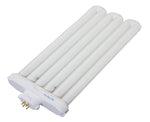

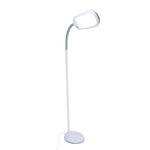

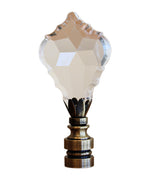

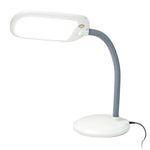


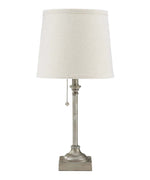


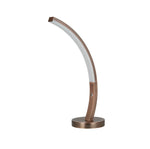



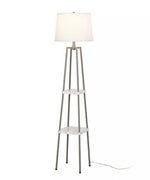


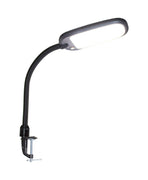











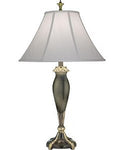

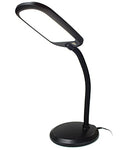


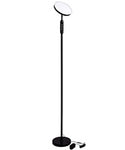

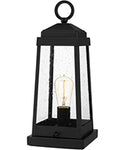
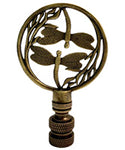
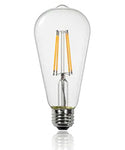
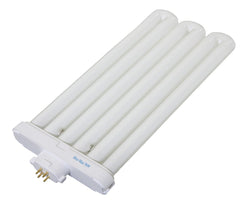
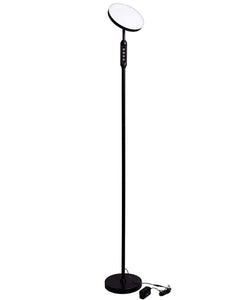
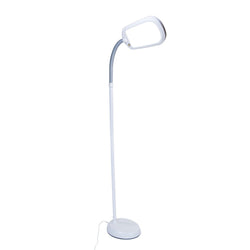
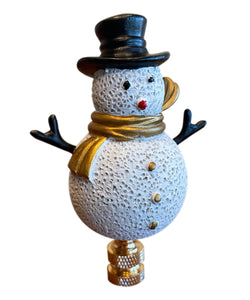
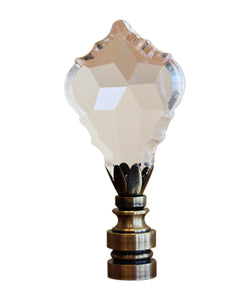
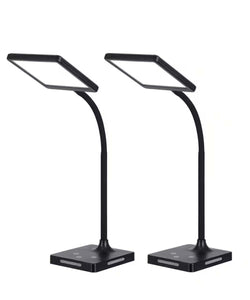


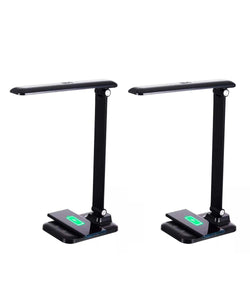

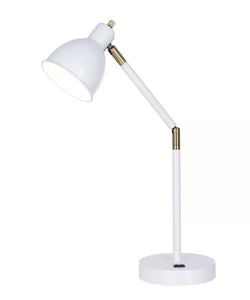
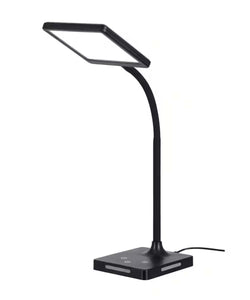


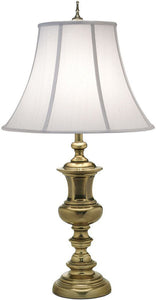
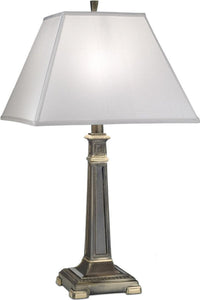
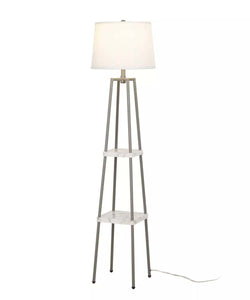
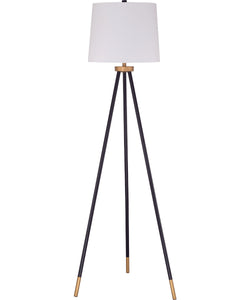

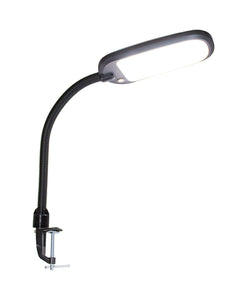
Comments